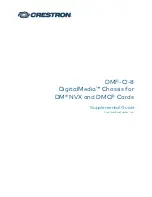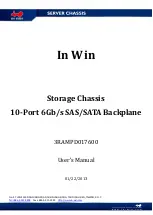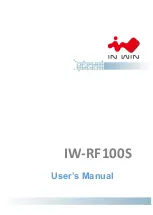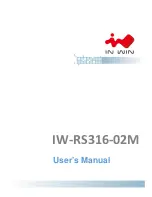
1-27
Cisco ASA Series CLI Configuration Guide
Chapter 1 Introduction to the Cisco ASA
Firewall Functional Overview
This section includes the following topics:
•
Security Policy Overview, page 1-27
•
Firewall Mode Overview, page 1-29
•
Stateful Inspection Overview, page 1-30
Security Policy Overview
A security policy determines which traffic is allowed to pass through the firewall to access another
network. By default, the ASA allows traffic to flow freely from an inside network (higher security level)
to an outside network (lower security level). You can apply actions to traffic to customize the security
policy. This section includes the following topics:
•
Permitting or Denying Traffic with Access Lists Rules, page 1-27
•
•
Protecting from IP Fragments, page 1-28
•
Using AAA for Through Traffic, page 1-28
•
Applying HTTP, HTTPS, or FTP Filtering, page 1-28
•
Applying Application Inspection, page 1-28
•
Sending Traffic to the IPS Module, page 1-28
•
Sending Traffic to the Content Security and Control Module, page 1-28
•
Applying QoS Policies, page 1-28
•
Applying Connection Limits and TCP Normalization, page 1-29
•
Enabling Threat Detection, page 1-29
•
Enabling the Botnet Traffic Filter, page 1-29
•
Configuring Cisco Unified Communications, page 1-29
Permitting or Denying Traffic with Access Lists Rules
You can apply an access list rule to limit traffic from inside to outside, or allow traffic from outside to
inside. For transparent firewall mode, you can also apply an EtherType access list to allow non-IP traffic.
Applying NAT
Some of the benefits of NAT include the following:
•
You can use private addresses on your inside networks. Private addresses are not routable on the
Internet.
•
NAT hides the local addresses from other networks, so attackers cannot learn the real address of a
host.
•
NAT can resolve IP routing problems by supporting overlapping IP addresses.
Summary of Contents for 5505 - ASA Firewall Edition Bundle
Page 28: ...Glossary GL 24 Cisco ASA Series CLI Configuration Guide ...
Page 61: ...P A R T 1 Getting Started with the ASA ...
Page 62: ......
Page 219: ...P A R T 2 Configuring High Availability and Scalability ...
Page 220: ......
Page 403: ...P A R T 2 Configuring Interfaces ...
Page 404: ......
Page 499: ...P A R T 2 Configuring Basic Settings ...
Page 500: ......
Page 533: ...P A R T 2 Configuring Objects and Access Lists ...
Page 534: ......
Page 601: ...P A R T 2 Configuring IP Routing ...
Page 602: ......
Page 745: ...P A R T 2 Configuring Network Address Translation ...
Page 746: ......
Page 845: ...P A R T 2 Configuring AAA Servers and the Local Database ...
Page 846: ......
Page 981: ...P A R T 2 Configuring Access Control ...
Page 982: ......
Page 1061: ...P A R T 2 Configuring Service Policies Using the Modular Policy Framework ...
Page 1062: ......
Page 1093: ...P A R T 2 Configuring Application Inspection ...
Page 1094: ......
Page 1191: ...P A R T 2 Configuring Unified Communications ...
Page 1192: ......
Page 1333: ...P A R T 2 Configuring Connection Settings and QoS ...
Page 1334: ......
Page 1379: ...P A R T 2 Configuring Advanced Network Protection ...
Page 1380: ......
Page 1475: ...P A R T 2 Configuring Modules ...
Page 1476: ......
Page 1549: ...P A R T 2 Configuring VPN ...
Page 1550: ......
Page 1965: ...P A R T 2 Configuring Logging SNMP and Smart Call Home ...
Page 1966: ......
Page 2059: ...P A R T 2 System Administration ...
Page 2060: ......
Page 2098: ...1 8 Cisco ASA Series CLI Configuration Guide Chapter 1 Troubleshooting Viewing the Coredump ...
Page 2099: ...P A R T 2 Reference ...
Page 2100: ......






































